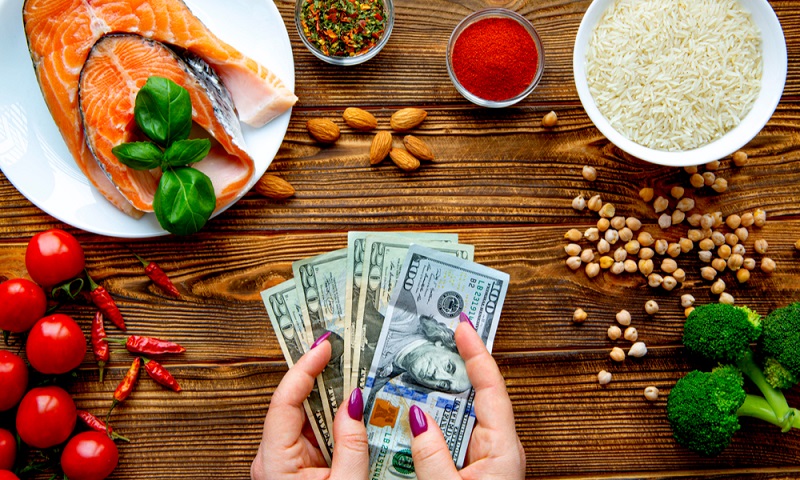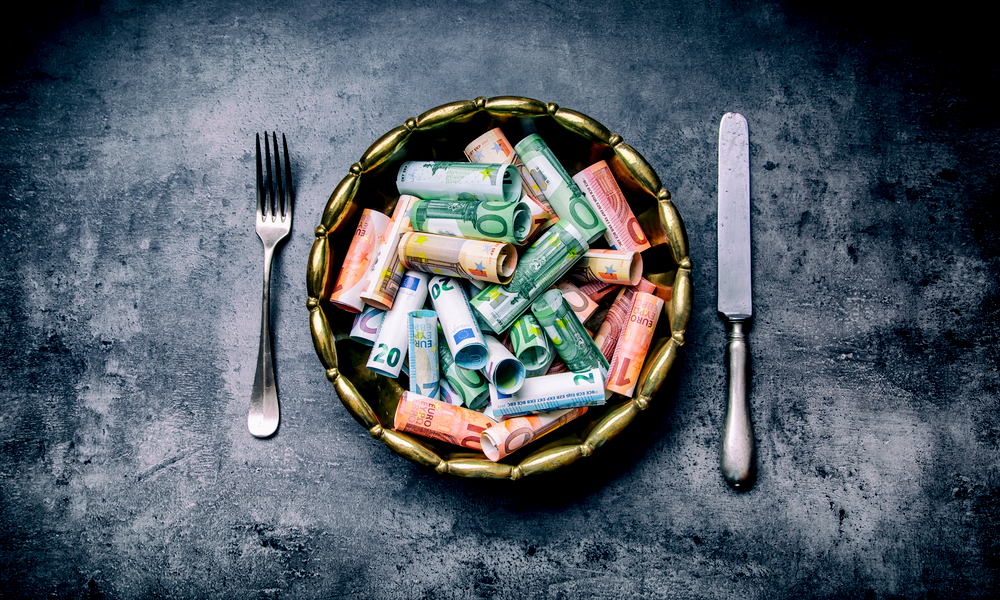Calculating the cost of goods sold, services and other renditions is crucial to success for restaurants.
It gives you a perspective on how to address pain points in your food menu pricing strategy, overhead expenses, ingredient section (*because it ties in with the food cost), and vice versa. Speaking of “How To’s”, we will talk about how to calculate food cost percentage with a few examples that will enable you to price your menu items accordingly.
For any business, calculations play a vital role. They’re important because the math eventually breaks down into the revenue vs. profit relationship by the end of each month. If you’re not familiar with how to calculate food cost percentage for your F&B business, now is the perfect time to start.
We will also highlight different key components that affect the pricing strategy. Above all, this is just a general guide on price and food cost percentage calculation. You need to improvise and handle the ever-changing food cost variables according to the nature of your restaurant business. Be smart; A/B testing, study your competitors and see how things pan out in the long run.
What Does “Food Cost” Mean for Restaurant Business Owners?
Food cost is the cost of ingredients, materials, and any direct/indirect expenses that go into food preparation. On top of that, the revenue that restaurants owner generate (*per plate serving) is not an indicator of profit, but just overall income.
Food Boss talks about How to Calculate Food Cost Percentage
Profit, on the other hand, is the actual leftover money that’s there when expense, tax, and other liabilities are deducted from the revenue. As a food business operator, your goal is to generate high enough revenue to have a decent profit percentage on the side. In that order, not all food dishes generate enough profit, and that’s also another reason for you to figure out how to calculate food cost percentage at an early onset.
We know a bunch of other restaurant owners who calculate the food cost in a different way. For instance, the said owners base the Cost of Goods Sold (Cogs) as the primary, and mandated, part of the food cost percentage formula.
These owners might include or exclude other things from the formula, but they don’t take out CoGS. The reason for doing so is that this method lets you overview food cost percentage at a bigger level when you are accounting for the cost of goods sold by the end of each fiscal quarter, year, or whatever your financial liability cycle is.
A rather simpler method for calculating food cost percentage is to just itemize the cost of each ingredient in the dish. This method gives you an accurate calculation of the serving on the plate so that you can stick with exact ingredient measurements and apply profit margin to the cost of that particular dish, with specific serving size.
Here are 2 Easiest Methods to Calculate Food Cost/ Food Cost Percentage:
1. Method A: Food Cost Itemization:
In this method, you can itemize all your ingredients and calculate their cost to get an accurate number for the cost per serving. For instance, if it’s a specialty dish, calculate the cost of each ingredient, and add it. The final sum is the actual cost of creating that dish in a given portion/ size.
This method is relatively easy and suitable for new food business owners with a small food order online menu.
2. Food Cost Percentage Calculation as a Whole:
This formula works at the inventory level and gives the ratio of your food cost to revenue.
(Cost of your Inventory at the Start of a Fiscal Period + Purchase Cost – Ending Inventory). Once you have the figure, divide it by the total sales. The formula can be tweaked further by dividing the cost of inventory+ purchase cost – ending inventory by the total number of sales made through online, or offline orders at your local establishment.
Here’s an example: we’ll assume the following values for your reference:
Initial Inventory Value = $10,000
Cost of Additional Purchases = $2000
Deductions Made or the Value of Ending Inventory = $4000
In the above scenario, it’ll be $10,000 + $2000 – $4000 = $8000
Now, assuming that you made roughly $12,000 in sales total by the end of a fiscal cycle, your percentage will be 66% after you divide $8000 by $12,000. Technically, the figure is 0.66, , but it interprets to 66% after you multiply it by 100. 66 cents is the cost of your food on top of $1.
What are the Benefits of Calculating Food Cost Percentage?
Since we have the basic idea of how to calculate food cost percentage, let’s take a look at some of the pros of integrating this formula:
-
Benchmarking Tool:
The cost of doing business serves as a benchmark, especially when you compare your cost with your competitors’ cost. On average, depending on the niche in which a restaurant is operating, the food cost percentage could be anywhere between 20% – 66%.
This percentage is a healthy indicator of estimating your profit margin, by giving you an idea about whether you need to go for cheaper ingredients to lower your food cost per serving or use some other alternatives to increase profit margin.
Using cheap ingredients is a good tactic. While doing so, make sure that the quality and taste of the food are not compromised. This strategy helps to create more wiggle room for profit margin.
-
You Get Indicators on Making Improvements:
If you have figured out how to calculate food cost percentage in a timely fashion, it gives way to addressing pain points in your food order menu.
Oftentimes, many food startups don’t engineer their menu properly. As a result, there are areas where the cost of certain menu items is exorbitantly high, which leads to lower sales volume. By having an accurate number on food cost and profit margin, you will be able to re-negotiate your terms or look at the portion size to reduce the number for any given dish.
Alternatively, there are times when food cost percentage is not an issue. Many businesses in the food industry devise their food cost after carefully analyzing the competition. However, the real issue is the vendor’s inability to bring in more sales through marketing channels, advertisements, organic traffic, and vice versa.
The latter is an entirely different matter, as it requires expert use of data available at food aggregators’ end, and integration of strategies that will help you to market your food order menu better.
The bottom line is, if you haven’t figured out how to calculate food cost percentage, you won’t know whether it’s the cost of your food, or something lacking in terms of restaurant marketing at different platforms.
-
Accurate Idea of Sales Pricing Strategy for Food Order Menu Items:
Lastly, once you have dropped the needle on calculating food cost percentage, you are better off with deciding the sales price for each individual menu item.
For instance, the cost of making one of the most sought-after items, such as a burger, is $4.43. Given that you have a lower food cost percentage of 33% or 30%, you can ideally target the sales price at $10. Alternatively, if your menu is carefully engineered, you can also increase the sales price of this burger to $13.
So, you see that having an accurate figure, as far as the cost of goods is concerned, gives more room to play around with your profit margin. That’s, all the more reason to find out how to calculate food cost percentage for your restaurant business.
Technology Is Your Best Friend for Calculating Food Cost Percentage:
In the end, we have an abundance of powerful software and hardware that helps to escalate the process.
Instead of meddling around with manual calculations, we recommend using data that are already available through POS systems. If you haven’t installed a Pos system for your restaurant, now is the perfect time to contact Blink Co. for a vendor account. They’ll set you up with integrated pos solutions, a dedicated admin dashboard, and plenty of other tools to get your food startup moving in the next gear.
After all, when it comes to figuring out how to calculate food cost percentage, it is all about using automated data in a smart way. We’re working in a competitive industry, where business owners have little to no time to perform manual calculations to get the numbers flowing through the system.
Related Articles:
 50 of the Best Restaurant Marketing Strategies in 2023 To Follow
50 of the Best Restaurant Marketing Strategies in 2023 To Follow
 5 Expert Tips on How to do Inventory at Your Restaurant in 2022
5 Expert Tips on How to do Inventory at Your Restaurant in 2022
 Restaurant Menu Management: How to Control Restaurant Costs
Restaurant Menu Management: How to Control Restaurant Costs
 CRM for Restaurants: Here is Why it’s a Revenue Changer In 2021
CRM for Restaurants: Here is Why it’s a Revenue Changer In 2021
 What is Restaurant Marketing Automation & How to Do It At Your Restaurant
What is Restaurant Marketing Automation & How to Do It At Your Restaurant


